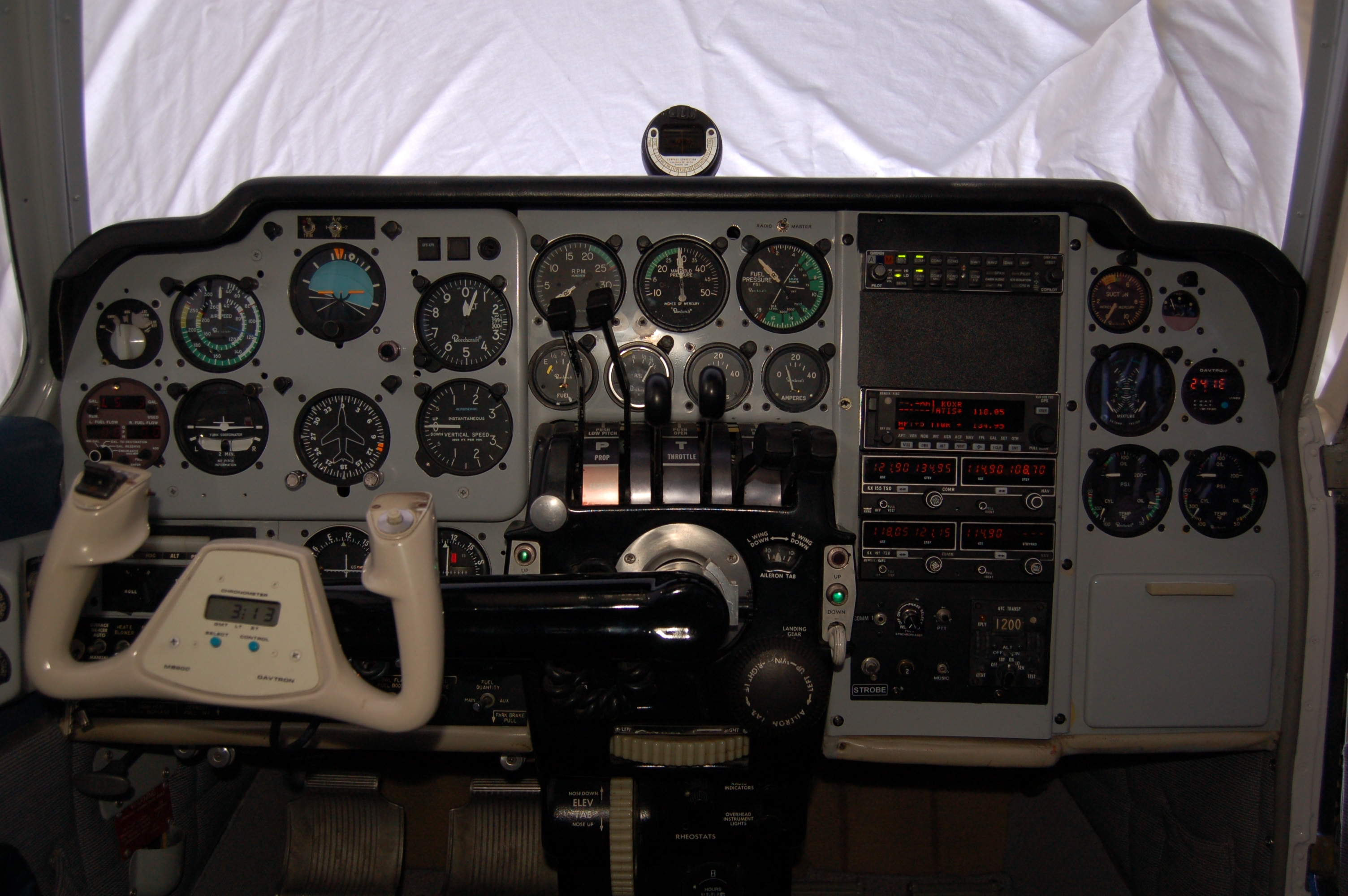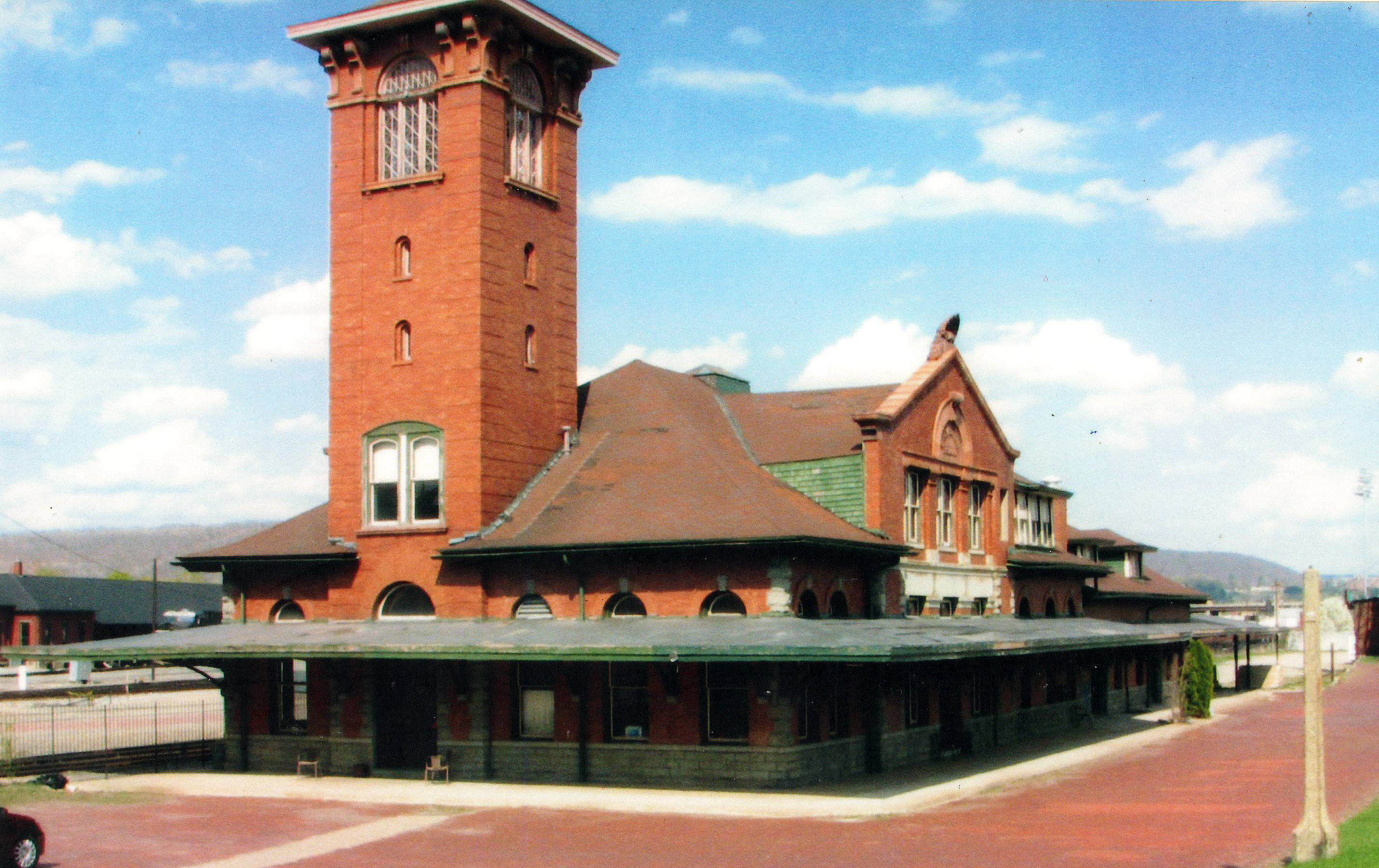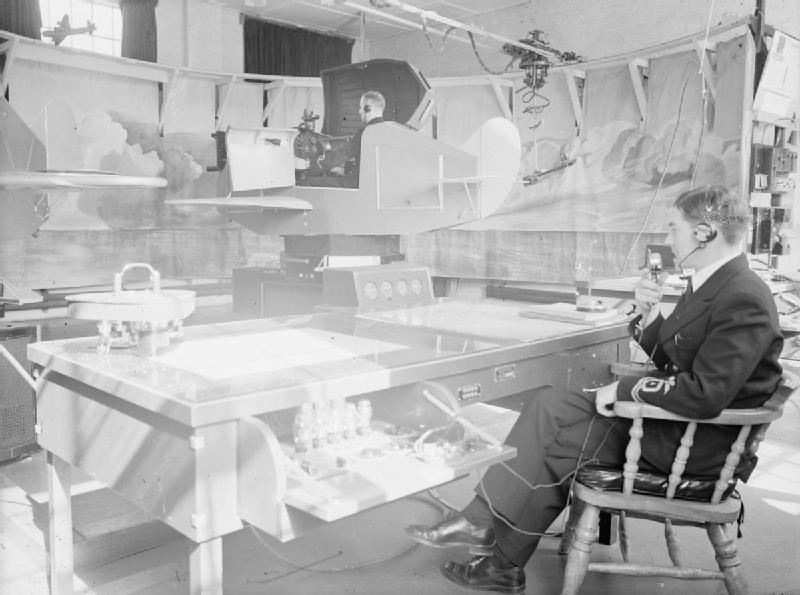|
Link Aviation
Link Aviation Devices was a manufacturer of aircraft simulators. The company is most notable for inventing the Link Trainer, and is credited with starting the flight simulator industry. It is currently a subsidiary of CAE Incorporated. History Ed Link founded the company in 1929 in Binghamton, New York, after experimenting with the compressed air used in the products of his father's Link Piano and Organ Company. The company's Link Trainer saw widespread service as an aircraft simulator during and after World War II. As a result, Link Aviation became one of the leading manufacturers of aircraft simulators in the world. In 1954, Link Aviation was purchased by the General Precision Equipment Corporation. It, in turn, was purchased by Singer Corporation in 1968 and Link became the Simulation Products Division and later the Link Flight Simulation Division. The reincorporated Link Military Simulation Corporation was sold in 1988 to CAE Industries, which became CAE-Link. CAE-Link w ... [...More Info...] [...Related Items...] OR: [Wikipedia] [Google] [Baidu] |
Edwin Albert Link
Edwin Albert Link (July 26, 1904 – September 7, 1981) was an American inventor, entrepreneur and pioneer in aviation, underwater archaeology, and submersibles. He invented the flight simulator, which was called the "Blue Box" or "Link Trainer". It was commercialized in 1929, starting a now multibillion-dollar industry. In total, he obtained more than 27 patents for aeronautics, navigation and oceanographic equipment. Early life Edwin Link was born in Huntington, Indiana, in 1904, the son of Edwin A. Link, Sr., and Katherine (Martin) Link. In 1910, he moved with his family to Binghamton, New York. Aviation Aviator He took his first flying lesson in 1920. In 1927, he obtained the first Cessna airplane ever delivered and eked out a living by barnstorming, charter flying and giving lessons. As a young man, Edwin Link used apparatus from his father's automatic piano and organ factory (of the Link Piano and Organ Company) to produce an advertising airplane. A punched roll and ... [...More Info...] [...Related Items...] OR: [Wikipedia] [Google] [Baidu] |
World War II
World War II or the Second World War, often abbreviated as WWII or WW2, was a world war that lasted from 1939 to 1945. It involved the vast majority of the world's countries—including all of the great powers—forming two opposing military alliances: the Allies and the Axis powers. World War II was a total war that directly involved more than 100 million personnel from more than 30 countries. The major participants in the war threw their entire economic, industrial, and scientific capabilities behind the war effort, blurring the distinction between civilian and military resources. Aircraft played a major role in the conflict, enabling the strategic bombing of population centres and deploying the only two nuclear weapons ever used in war. World War II was by far the deadliest conflict in human history; it resulted in 70 to 85 million fatalities, mostly among civilians. Tens of millions died due to genocides (including the Holocaust), starvation, ma ... [...More Info...] [...Related Items...] OR: [Wikipedia] [Google] [Baidu] |
Piper Aztec
The Piper PA-23, named Apache and later Aztec, is an American four- to six-seat twin-engined light aircraft aimed at the general-aviation market. The United States Navy and military forces in other countries also used it in small numbers. Originally designed in the 1950s by the Stinson Aircraft Company, Piper Aircraft manufactured the Apache and a more powerful version, the Aztec, in the United States from the 1950s to the 1980s. Design and development The PA-23 was the first twin-engined Piper aircraft, and was developed from a proposed "Twin Stinson" design, inherited when Piper bought the Stinson Division of the Consolidated Vultee Aircraft Corporation. The prototype PA-23 was a four-seat, low-wing, all-metal monoplane with a twin tail, powered by two 125 hp Lycoming O-290-D piston engines; it first flew on March 2, 1952. The aircraft performed badly, so it was redesigned with a single vertical stabilizer and an all-metal rear fuselage and more powerful 150 hp Lycomi ... [...More Info...] [...Related Items...] OR: [Wikipedia] [Google] [Baidu] |
Cessna 310
The Cessna 310 is an American four-to-six-seat, low-wing, twin-engine monoplane produced by Cessna between 1954 and 1980. It was the first twin-engine aircraft that Cessna put into production after World War II. Development The 310 first flew on January 3, 1953, with deliveries starting in late 1954. The sleek modern lines of the new twin were backed up by innovative features such as engine exhaust thrust augmenter tubes and the storage of all fuel in tip tanks in early models. In 1964, the engine exhaust was changed to flow under the wing instead of the augmenter tubes, which were considered to be noisy. Typical of Cessna model naming conventions, a letter was added after the model number to identify changes to the original design over the years. The first significant upgrade to the 310 series was the 310C in 1959, which introduced more powerful Continental IO-470-D engines. In 1960 the 310D featured swept-back vertical tail surfaces. An extra cabin window was added with t ... [...More Info...] [...Related Items...] OR: [Wikipedia] [Google] [Baidu] |
Beechcraft Baron
The Beechcraft Baron is a light twin-engined piston aircraft designed and produced by Beechcraft. The aircraft was introduced in 1961. A low-wing monoplane developed from the Travel Air, it remains in production. Design and development The direct predecessor of the Baron was the Beechcraft 95 Travel Air, which incorporated the fuselage of the Bonanza and the tail control surfaces of the T-34 Mentor military trainer. To create the new airplane, the Travel Air's tail was replaced with that of the Beechcraft Debonair, the engine nacelles were streamlined, six-cylinder engines were added, and the aircraft's name was changed. In 1960, the Piper Aztec was introduced, using two 250 hp Lycoming O-540 engines; Cessna too had improved its 310 with two Continental IO-470 D, producing 260 hp. Meanwhile, Beechcraft's Bonanza had been improved with a Continental IO-470-N. But the answer to competition was to make a true twin-engined variant of the Bonanza. The first model, th ... [...More Info...] [...Related Items...] OR: [Wikipedia] [Google] [Baidu] |
Lockheed F-80 Shooting Star
The Lockheed P-80 Shooting Star was the first jet fighter used operationally by the United States Army Air Forces (USAAF) during World War II. Designed and built by Lockheed in 1943 and delivered just 143 days from the start of design, production models were flying, and two pre-production models did see very limited service in Italy just before the end of World War II. Designed with straight wings, the type saw extensive combat in Korea with the United States Air Force (USAF) as the F-80. America's first successful turbojet-powered combat aircraft, it was soon outclassed with the appearance of the swept-wing transonic MiG-15 and was quickly replaced in the air superiority role by the transonic F-86 Sabre. The F-94 Starfire, an all-weather interceptor using the same airframe, also saw Korean War service. The closely related T-33 Shooting Star trainer remained in service with the U.S. Air Force and Navy well into the 1980s, with the last NT-33 variant not retired until April ... [...More Info...] [...Related Items...] OR: [Wikipedia] [Google] [Baidu] |
AVCATT
AVCATT (Aviation Combined Arms Tactical Trainer) is a mobile aviation training simulator developed by L-3 Communications, Link Simulation & Training for the United States Army in 2001. Entire units (suites) have been fielded. AVCATT is used by Active, Reserve and Army National Guard components. AVCATT supports unit collective and combined arms training for the AH-64, UH-60, CH-47 and OH-58 aircraft. Other AVCATT modules, such as the Non-Rated Crewmember Manned Module ((NCM3), a sub-system of AVCATT), can be linked to this base configuration to support specific unit training requirements. The NCM3 supports the training of non-rated crew members in crew coordination, flight, aerial gunnery, hoist and sling load-related tasks. AVCATT is a mobile, transportable, multi-station device that supports unit collective and combined arms training for helicopter aircrews. The AVCATT occupies two trailers with the NCM3 adding a third trailer containing two reconfigurable modules for the CH-47 ... [...More Info...] [...Related Items...] OR: [Wikipedia] [Google] [Baidu] |
L-3 Communications
L3 Technologies, formerly L-3 Communications Holdings, was an American company that supplied command and control, communications, intelligence, surveillance and reconnaissance ( C3ISR) systems and products, avionics, ocean products, training devices and services, instrumentation, aerospace, and navigation products. Its customers included the Department of Defense, Department of Homeland Security, United States Intelligence Community, NASA, aerospace contractors, and commercial telecommunications and wireless customers. In 2019, it merged with Harris Corporation and was renamed to L3Harris Technologies. L3 was headquartered in Murray Hill, Manhattan, New York City. History L3 was formed as L-3 Communications in 1997 to acquire certain business units from Lockheed Martin that had previously been part of Loral Corporation. These units had belonged to Lockheed Corporation and Martin Marietta, which had merged three years before in 1993. The company was founded by (and named for ... [...More Info...] [...Related Items...] OR: [Wikipedia] [Google] [Baidu] |
Hughes Electronics Corporation
Hughes may refer to: People * Hughes (surname) * Hughes (given name) Places Antarctica * Hughes Range (Antarctica), Ross Dependency * Mount Hughes, Oates Land * Hughes Basin, Oates Land * Hughes Bay, Graham Land * Hughes Bluff, Victoria Land * Hughes Glacier, Victoria Land * Hughes Island, Victoria Land * Hughes Peninsula, Ellsworth Land * Hughes Point, Ellsworth Land Australia * Division of Hughes, an electoral district * Hughes, Australian Capital Territory, a suburb of Canberra * Hughes, Northern Territory, a rural locality United States * Hughes, Alaska, a city * Hughes, Arkansas, a city * Hughes, Iowa, a ghost town * Hughes, Wisconsin, a town * Hughes County, Oklahoma * Hughes County, South Dakota * Hughes Lake (California) * Hughes Mountain, Missouri * Hughes River (Virginia) * Hughes River (West Virginia) Other * Hughes, Santa Fe, Argentina, a town * Hughes Range (British Columbia), Canada * Hughes Reef, South China Sea * 1878 Hughes, an asteroid Businesses * Ba ... [...More Info...] [...Related Items...] OR: [Wikipedia] [Google] [Baidu] |
Link Piano And Organ Company
The Link Piano and Organ Company was an American manufacturer of pianos, orchestrions, fotoplayers, and theatre organ, theatre pipe organs. During the early 1900s, George T. Link was managing a small firm named ''Shaft Brothers Piano Company'', which manufactured and sold pianos to the ''Automatic Musical Company'' of Binghamton, New York. When the Automatic Musical Company went bankrupt about a decade later, George's son, Edwin A. Link, Sr., became employed by the creditors to go to Binghamton and operate the company. The Links, with their two sons, George and Edwin Albert Link, Edwin Jr., moved from Huntington, Indiana to Binghamton that same year. Edwin Sr. was successful at turning the company around, and later purchased the company from the creditors, then changing the name to the Link Piano Company. For a period of time, the business primarily focused on making player pianos and orchestrions. The Star Theater, which was the oldest movie house in Binghamton, was the first to ... [...More Info...] [...Related Items...] OR: [Wikipedia] [Google] [Baidu] |
Binghamton, New York
Binghamton () is a city in the U.S. state of New York, and serves as the county seat of Broome County. Surrounded by rolling hills, it lies in the state's Southern Tier region near the Pennsylvania border, in a bowl-shaped valley at the confluence of the Susquehanna and Chenango Rivers. Binghamton is the principal city and cultural center of the Binghamton metropolitan area (also known as Greater Binghamton, or historically the Triple Cities, including Endicott and Johnson City), home to a quarter million people. The city's population, according to the 2020 census, is 47,969. From the days of the railroad, Binghamton was a transportation crossroads and a manufacturing center, and has been known at different times for the production of cigars, shoes, and computers. IBM was founded nearby, and the flight simulator was invented in the city, leading to a notable concentration of electronics- and defense-oriented firms. This sustained economic prosperity earned Binghamton the mon ... [...More Info...] [...Related Items...] OR: [Wikipedia] [Google] [Baidu] |
Link Trainer
The term Link Trainer, also known as the "Blue box" and "Pilot Trainer" is commonly used to refer to a series of flight simulators produced between the early 1930s and early 1950s by Link Aviation Devices, founded and headed by Ed Link Edwin Albert Link (July 26, 1904 – September 7, 1981) was an American inventor, entrepreneur and pioneer in aviation, underwater archaeology, and submersibles. He invented the flight simulator, which was called the "Blue Box" or "Link Trai ..., based on technology he pioneered in 1929 at his family's business in Binghamton, New York. During World War II, they were used as a key pilot training aid by almost every combatant nation. The original Link Trainer was created in 1929 out of the need for a safe way to teach new pilots how to fly by flight instruments, instruments. Ed Link used his knowledge of pumps, valves and bellows gained at his father's Link Piano and Organ Company to create a flight simulator that responded to the pilot's co ... [...More Info...] [...Related Items...] OR: [Wikipedia] [Google] [Baidu] |




